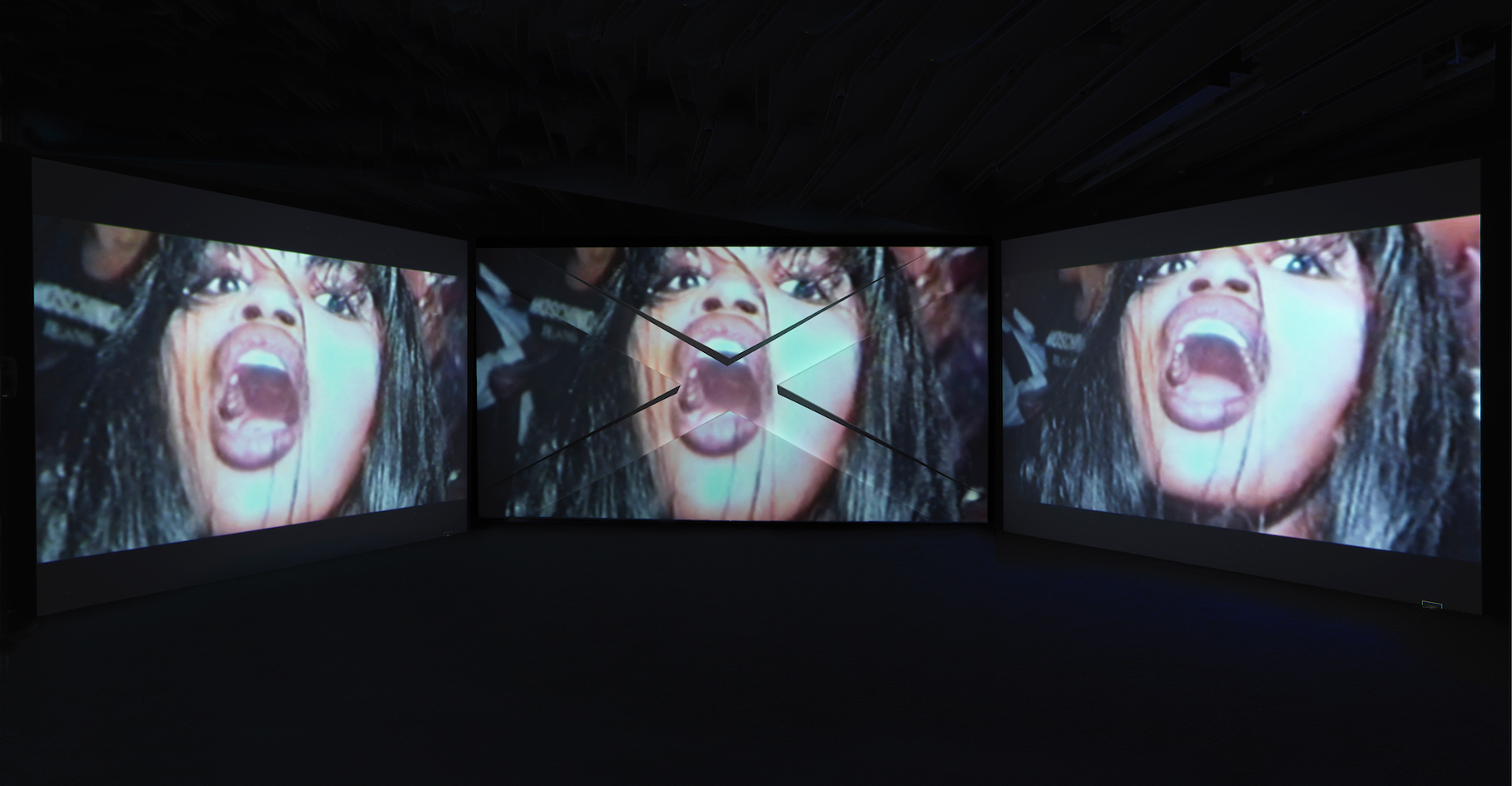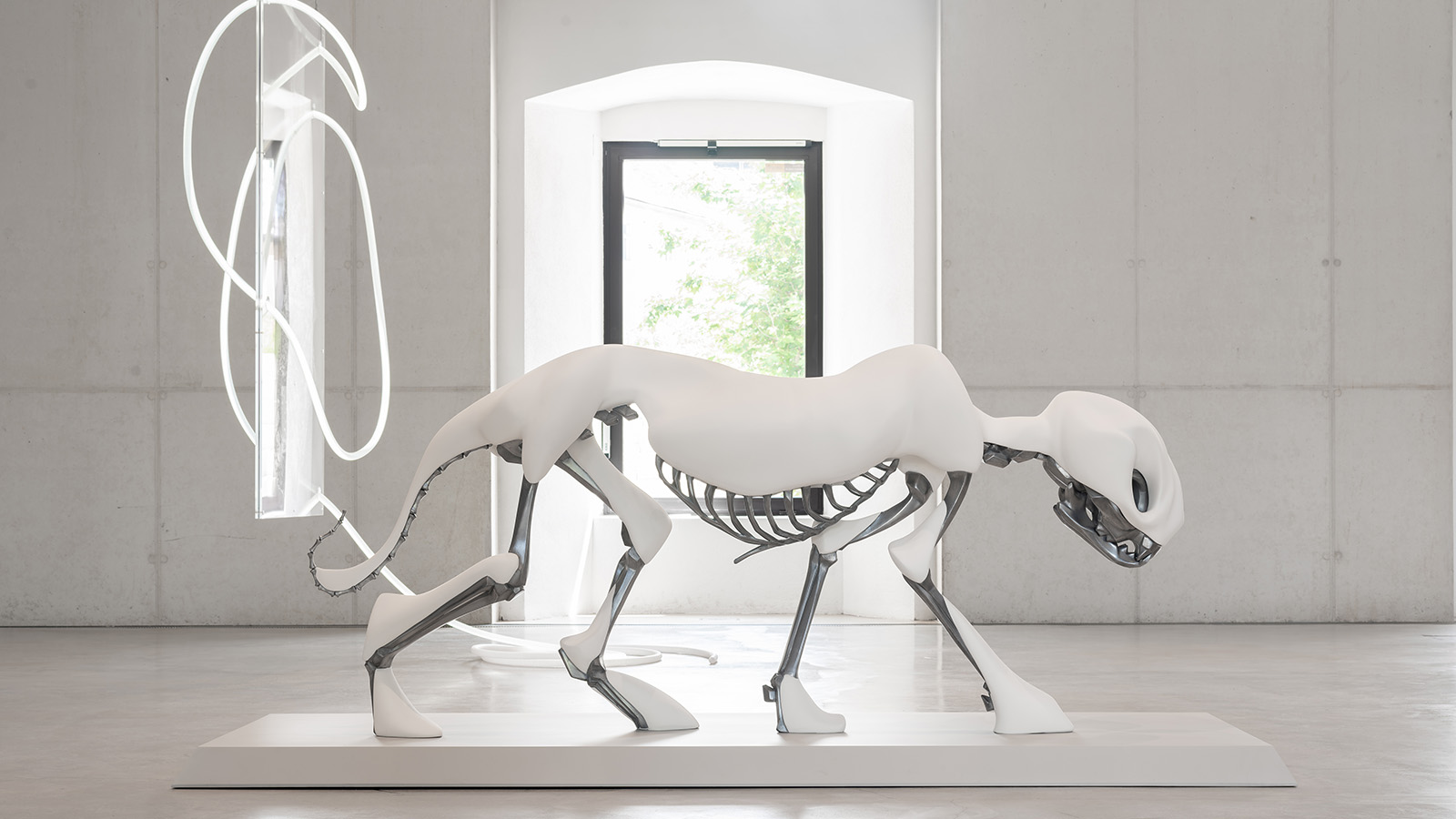Biennale de l’Image en Mouvement: radical reflections on surreal times
At Centre d’Art Contemporain, Geneva, the Biennale de l’Image en Mouvement 2021 kicks off with group show ‘A Goodbye Letter, A Love Call, A Wake Up Song’, a full house of subversive moving image commissions

The Biennale de l’Image en Mouvement, delayed by a year by the pandemic, is a unique event in more ways than one. Since director of the Centre d’Art Contemporain Genève, Andrea Bellini, took over in 2012, all the featured work has been commissioned specifically for the biennial. Each iteration is co-curated by Bellini and an outside curator of his choosing, this time the New York-based collective DIS.
‘I think the big difference between DIS and all the other curators in the art world is that they have a constant dialogue with the artists they work with, it's a family, it's a community,’ Bellini says.
‘A Goodbye Letter, A Love Call, A Wake Up Song’ comprises 15 works, the majority of which have been made during the pandemic, satisfying a need to mirror the moment, unprecedented in our lifetimes. Artists including Camille Henrot, Juliana Huxtable & Hannah Black, Telfar, Will Benedict & Steffen Jørgensen, Mandy Harris Williams, and Leah Hennessey & Emily Allan raise questions about hierarchies, in terms of identity, finance, race, gender and even species.

Camille Henrot, Saturday, 2017. 3D video, colour, sound, 19’32’’
According to Lauren Boyle of DIS, the curatorial process was a fluid one, as film is a collaborative medium, which led to a cross-pollination as some artists contributed to each other’s work. As a result, there is a consensus in the messages behind the works.
The industrial space has been divided up to embody a ‘hotel’ for the art on view, with each installation inhabiting its own room with a small porthole you can peer through before entering. The dark curtained corridors are dimly lit by works from Grau’s Fire, 2021, a series of light sculptures. Large lozenge-shaped, throbbing orbs of red and blue light guide you through the hotel. This evokes a feeling of existing inside a screen, as the works play with the sense of reality as they mark the way through the darkness from film to film.
Everything But The World, 2021 created by DIS, defies the nebulous space we have until now occupied. A historical tour guide deconstructs ideas about feminism and witchcraft, satirical internet personalities Wit and Banter ask us if we know ‘that most fossils are actually unhappy with their condition’, and a White Castle burger-joint drive-through operator lectures his customers about late-stage capitalism as they wait for their food. An overarching narrative is provided by artist and filmmaker Leilah Weinraub, who plays the role of Shock Jock, leaving us with the question ‘Why are you mad?’


DIS, Everything But The World, 2021.
The sending up of manifesto and performative identity is a common theme. Mandy Harris Williams’ Couture Critiques looks at performative intellectualism, asking why we need to perform ideas and what doing this via social media can do to their content and meaning.
Wallpaper* Newsletter
Receive our daily digest of inspiration, escapism and design stories from around the world direct to your inbox.
Juliana Huxtable & Hannah Black and And Or Forever debunk the hierarchy of species in Penumbra, 2021, a reworking of the original play staged at Performance Space New York. Elsewhere, Simon Fujiwara talks about identity politics outside the digital space in Who is Who? 2021, and Will Benedict & Steffen Jørgensen tackle our relationship with food and digestion. Leah Hennessey & Emily Allan’s film Illuminati Detectives in which Byron and Shelley investigate the paranormal for the Illuminati brings some serious laughs.
All the works, although often laced with humour, challenge the infrastructure of our lives and inherent identities – from Akeem Smith’s Social Cohesiveness, and Telfar’s TELFARTV, 2021 a live stream, to Theo Anthony’s exploration of the narrative of police body-cam footage. Anthony’s project is serialised on DIS.art, where there are continuations of certain works.
There is something deeply liberating about experiencing work dealing with themes brought into relief by the pandemic. Whether overloading, confusing, life re-assessing, identity re-evaluating or simply offering a chance to step back, universal questions are captivatingly parsed through this exhibition.

Akeem Smith, Social Cohesiveness (2020). Installation View of 'Akeem Smith: No Gyal Can Test' at Red Bull Arts New York, 2020.

Simon Fujiwara, Once Upon a Who?, 2021.

Mandy Harris Williams, Couture Critiques, 2021.

Camille Henrot, Saturday, 2017. 3D video, colour, sound, 19’32’’

Will Benedict and Steffen Jørgensen.
INFORMATION
Biennale de l'Image en Mouvement 2021: ‘A Goodbye Letter, A Love Call, A Wake Up Song’, until 30 January, Centre d’Art Contemporain Genève. centre.ch
Amah-Rose Abrams is a British writer, editor and broadcaster covering arts and culture based in London. In her decade plus career she has covered and broken arts stories all over the world and has interviewed artists including Marina Abramovic, Nan Goldin, Ai Weiwei, Lubaina Himid and Herzog & de Meuron. She has also worked in content strategy and production.
-
 Switzerland’s best art exhibitions to see in 2025
Switzerland’s best art exhibitions to see in 2025Art fans, here’s your bucket list of the standout exhibitions to see in Switzerland in 2025, exploring compelling themes and diverse media
By Simon Mills Published
-
 Out of office: what the Wallpaper* editors have been doing this week
Out of office: what the Wallpaper* editors have been doing this weekA snowy Swiss Alpine sleepover, a design book fest in Milan, and a night with Steve Coogan in London – our editors' out-of-hours adventures this week
By Bill Prince Published
-
 ‘Happy birthday Louise Parker II’: enter the world of Roe Ethridge
‘Happy birthday Louise Parker II’: enter the world of Roe EthridgeRoe Ethridge speaks of his concurrent Gagosian exhibitions, in Gstaad and London, touching on his fugue approach to photography, fridge doors, and his longstanding collaborator Louise Parker
By Zoe Whitfield Published
-
 What to see at Art Basel 2024, as the fair arrives at its hometown
What to see at Art Basel 2024, as the fair arrives at its hometownArt Basel 2024, the fair of all fairs, runs 13-16 June, with 285 international exhibitors and a long list of side shows and projects
By Osman Can Yerebakan Published
-
 Dan Flavin’s fluorescent lights light up Basel
Dan Flavin’s fluorescent lights light up Basel‘Dedications in Lights’ celebrates Dan Flavin’s conceptual works, at Kunstmuseum Basel
By Amah-Rose Abrams Published
-
 Space for My Body: Anu Põder’s retrospective opens in Switzerland
Space for My Body: Anu Põder’s retrospective opens in SwitzerlandEstonian artist Anu Põder is celebrated by Switzerland’s Muzeum Susch in an exhibition curated by Cecilia Alemani
By Hannah Silver Published
-
 Bally Foundation’s new Lake Lugano headquarters is an art-filled paradise
Bally Foundation’s new Lake Lugano headquarters is an art-filled paradiseThe Bally Foundation inaugurates its new headquarters in a 1930s villa overlooking the majestic Lake Lugano, Switzerland with the group show ‘Un Lac Inconnu’ (An Unknown Lake)
By Hili Perlson Published
-
 Supergraphics pioneer Barbara Stauffacher Solomon: ‘Sure, make things big – anything is possible'
Supergraphics pioneer Barbara Stauffacher Solomon: ‘Sure, make things big – anything is possible'94-year-old graphic designer Barbara Stauffacher Solomon talks radical typography, motherhood, and her cool welcome for St Moritz
By Jessica Klingelfuss Published